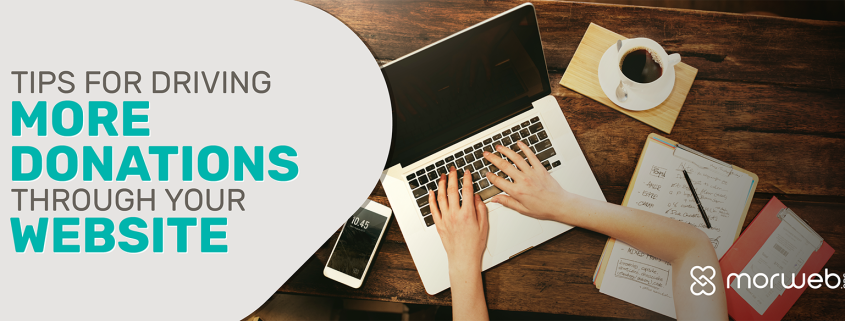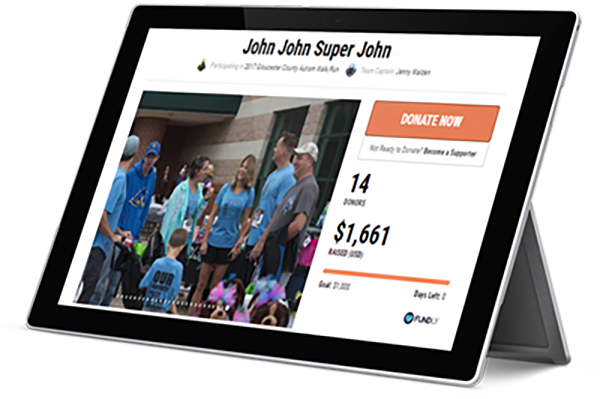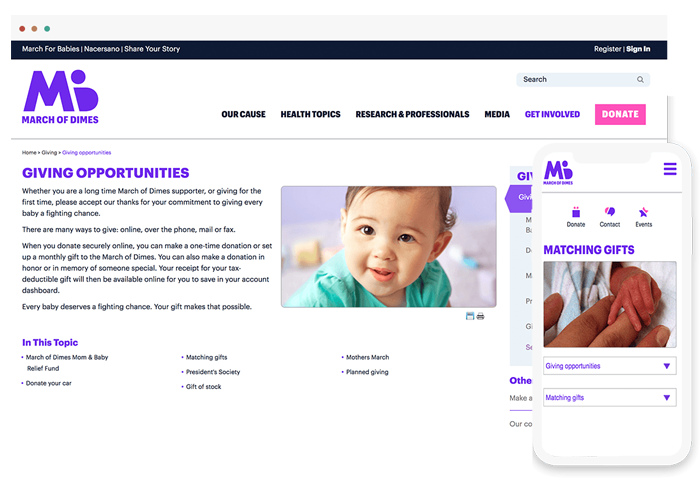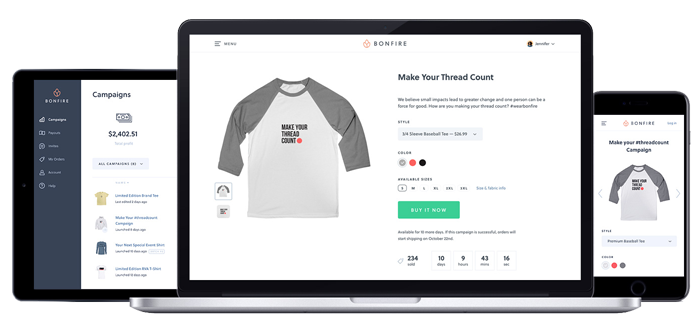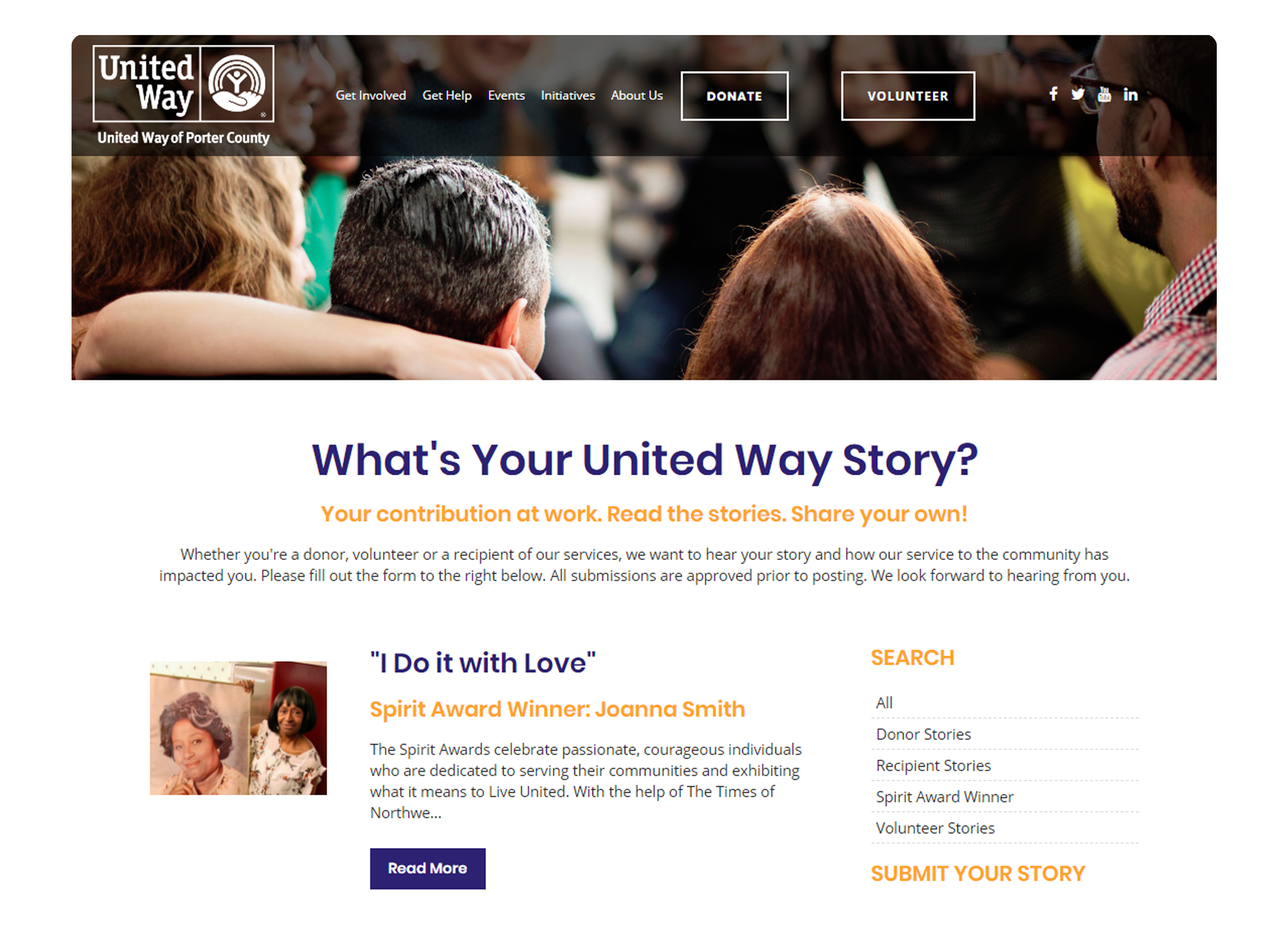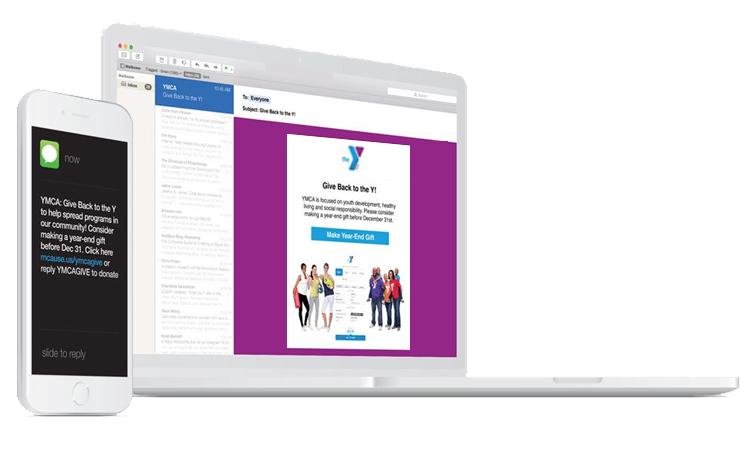7 Tips for Driving More Donations Through Your Website
First impressions are important! And your website is the first point of contact many people will have with your nonprofit organization.
This is where people will turn to learn more about your organization’s mission, to contact you about their potential interest, and to give donations.
Therefore, when it comes to driving donations for your cause, your website is becoming an increasingly important resource. That’s why it is crucial to maximize this fundraising channel as much as you can.
Implement these seven effective tips to make sure you are getting the most out of your website’s fundraising potential:
- Make sure your website is well-designed.
- Host a variety of online fundraisers.
- Market matching gifts.
- Sell merchandise through your website.
- Recognize your lead donors.
- Direct people to your website.
- Optimize your website for accessibility.
Let’s jump into the first strategy!
1. Make sure your website is well designed.
Nowadays, you don’t have to be a web developer to create a high-end donation website. There are so many tools that you can use to create your site in-house and still make it professional looking.
The first step to creating an effective website is to find the tool you will use to create it: your content management system (CMS). Different CMS platforms offer different features, so make a list of the features you’ll need access to.
Consider these tips when choosing your nonprofit’s ideal CMS:
- Make sure your website is customizable. Be sure you can include your organization’s brand colors, logos, etc. directly on your website to make your site familiar to your supporters.
- Ensure you are prepared to grow. If you choose a theme that is too limiting, it can be difficult to expand your website to grow with your organization.
- Choose a CMS that is not too technical. CMS platforms like Morweb offer diverse themes that are easy to implement and configure for your nonprofit’s website.
Customizing your nonprofit website to maximize its functionality and appearance will make a great first impression on donors, make it easy to find the donation page on your site, and ultimately boost your online donations.
What to learn more about smart web design strategies? Check out Morweb’s top nonprofit website design tips.
2. Host a variety of online fundraisers.
When you offer a variety of online fundraising channels, you improve the likelihood that someone will be able to give to at least one fundraiser, and then visit your website afterward!
For instance, crowdfunding campaigns appeal to a population of people who want to give back, but only can only afford a small donation. However, in the future they may want to give more substantial donations directly to your cause.
Once someone has given to your crowdfunding campaign, peer-to-peer fundraiser, or other fundraiser, they should feel compelled to also visit your website for more information on your organization (and to give future donations!).
To drive more people to your website after donating to your cause off-site, use your campaign page to its fullest potential. Try Donately’s favorite campaign page best practices to make sure your page is up-to-par. Some details to include are:
- Your brand colors. When someone decides to visit your campaign page from your website, you want the transition from one page to another to feel as cohesive as possible. This is done by using the same brand colors, logos, and graphics between both your site and fundraising pages.
- Your mission statement. Include this statement directly on your fundraising page so people know the overarching cause to which they are contributing. Be sure to link to your website for a more extensive explanation of your goals.
- A thought-provoking image. This image gives life to your mission. Include an image of your beneficiaries or your staff so your donor can associate a face with your nonprofit organization’s mission.
- A call-to-action. Include a button or a link to make it easy for donors to visit your website after their donation to your fundraiser. Write a short statement such as “visit our site for more information” on your CTA button.
Bonus tip: Place a donation button onto your website permanently to drive regular donors and visitors to your ongoing fundraisers or to allow donations to occur online whenever they feel the impulse to give. Using a simple, online solution makes it easier to add a donation button to your page no matter the CMS your site is built on.
Offering supporters a variety of ways to give to your cause off-site is a great way to entice a wide range of donors to give to your cause. It’s also a great way to get people to visit your website for future donations.
3. Market matching gifts.
Matching gifts are an easy way to increase your donors’ impact without asking them to reach back into their wallets. Through this corporate philanthropy program, many businesses will contribute to the same nonprofits their employees do at a matching dollar-per-dollar rate.
However many people don’t know their donations have the potential to be doubled! In fact, just 8% of donors know whether their employer offers a matching gift program, if they’re eligible, and how to complete a matching gift request.
Expand that 8% to start earning more free revenue by marketing matching gifts. A few ways you can inform supporters about this giving opportunity include:
- Add a matching gift database on your website. This software allows donors to search for their employer to see if they are eligible for a matched gift. Matching gift search tools can even connect supporters with their employer’s matching gift request form, and some businesses even leverage matching gift auto-submission technology that instantly completes employees’ match applications for them.
- Market matching gifts on social media. Post about matching gifts on social media, your blog, or any other communication channels you regularly use to spread awareness. Take a multi-channel approach so donors who miss a post on one platform have a chance to find your message on another.
- Create a matching gifts page on your website. This page will act as a one-stop information center about matching gifts. Include a link to your donation page and matching gifts database, or embed a matching gift search tool directly into the page so supporters can determine their eligibility then and there.
Because matching gifts come from companies instead of individual donors, all you need to do is market them effectively.
Your website is the perfect place to conduct these marketing strategies because it is where people go to look for donation information anyway.
4. Sell merchandise through your website.
Selling merchandise on your website allows you to advertise custom products and process payments in one place. Online nonprofit storefronts provide another source of revenue in addition to donations.
Customized merchandise excites donors because they receive a tangible product in return for their donation. For example, you might choose to sell:
- Custom t-shirts
- Water bottles
- Keychains
- Mugs
- Bumper stickers
- Hats
- Pet clothes
- Fridge magnets
- Sweaters and hoodies
When customizing these items, add your logo and brand colors. Merchandise with a consistent design theme will make your online store look professional and cohesive. Plus, when a supporter wears a t-shirt or hat branded to your nonprofit out in public, everyone will see a little advertisement for your organization.
Choose a CMS provider that offers online storefronts to make it easy to sell these branded items from your website. Or, choose a website theme that offers e-commerce capabilities along with the standard essentials.
5. Recognize your lead donors.
People tend to enjoy being recognized for the good deeds they do, and for the donations they make to incredible organizations like yours. Don’t forget to celebrate your supporters on your nonprofit’s website!
To recognize these amazing people, consider some of the following strategies:
- Feature a “donor of the week” on your website. You can feature the name of the donor and a photo if they are willing to provide it. As an added bonus, share the “donor of the week” on social media with a link back to your website!
- Include a virtual donor recognition wall for your organization. This “wall” allows you to display the names of your major donors on your website for everyone to see. Prospective donors and website visitors will be inspired looking through the records of past donors.
- Email the featured donors with a link to the recognition page. Send a personal email to the donor you choose to feature to show them your appreciation and give them some personal attention. Link them back to the page on which they are featured so they can share it with their family and friends.
One major reason to recognize your donors is simply to show your appreciation. Together, donors are a life source for your organization. When they give, they show that they believe in your cause. Show your appreciation for their gifts and support by recognizing their efforts.
Another reason to recognize your donors is to add incentive to give for both the featured donor and for others. Major donors who see their name recognized tend to give again to organizations. Plus, other donors who see a recognition wall will be more motivated to give and be featured.
6. Direct people to your website.
Directing more people to your website and to your giving page is a great way to increase online donations and overall online traffic. You can do this by connecting your online platforms to one another.
Try including links to your website or donation page directly from your:
- Emails. No matter the content of your email, you should always have it link back to your website. Make it easy for people to find more information about your nonprofit organization. When you ask for donations, link directly to your donation page or fundraising page from the email.
- Texts. Text-to-give services make it easy to drive donations through your website from mobile devices. For example, at your next fundraising event, ask people to text their donation to your assigned number. When they send the text, they will receive a link to your website’s donation page where they can send an online donation right from their phone!
- Social media. Many of your supporters rely on social media to see the everyday activities of your organization. This means they check the social media pages more often than your website itself. When you link from social media to your website, you will begin to see more traffic through both channels.
Once people have followed links from different sources to your website or to your donation page, you are already halfway closer to a donation!
7. Optimize your website for accessibility.
Can all of your donors use your website? Some supporters may have challenges navigating your site for various reasons, and you should ensure your website layout is no obstacle when it comes to providing them with the information and tools they need to continue their donor journeys.
Improve your website’s accessibility by following the Web Content Accessibility Guidelines (WCAG), which include four main principles:
- Perceivable. All visitors should be able to perceive your content. This means supporters with visual impairments who use screenreader technology should be able to perceive images through the use of alt text and videos through captions and transcripts.
- Operable. Can users easily interact with elements on your website? Try navigating your website entirely with just a keyboard to ensure it’s accessible to anyone not using a computer mouse.
- Understandable. Ensure your content is legible and consistently formatted to avoid confusion. Use readable fonts and background and text colors with sufficient contrast. Avoid jargon and define technical terms that are necessary for getting your point across.
- Robust. Your content should be accessible regardless of what internet browser or device supporters use. In particular, make sure your website works with screenreaders and other assistive technologies.
To determine if your website is fully accessible, the World Wide Web Consortium has compiled a collection of online accessibility checking tools organizations can use to evaluate the state of their websites.
Your website is an important place for you to interact with your donors. The growth of the internet has made it an important place to collect donations. These seven tips are easy and effective ways to drive more online traffic and grow your donations through your website.
Author Bio


